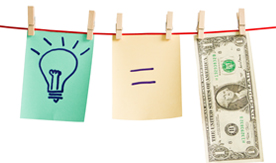Creative Value

Inventive, imaginative, resourceful and innovative are synonyms for creative.
And in the wake of the Great Recession of 2008, they also were synonymous with better employment prospects, according to a new study by a team of researchers.
The team, including University of Maine economist Todd Gabe, found that from 2006–11, members of the creative class — including those with careers in knowledge-based, creative fields of computers, architecture, arts, business, health care and high-end sales — had a higher probability of being employed than people in the working and service classes.
Having a creative career was even more valuable in the two years after the Great Recession, which may indicate the U.S. economy is undergoing a structural change, say Gabe, Richard Florida of Martin Prosperity Institute in Toronto, Canada, and Charlotta Mellander of Jönköping International Business School in Jönköping, Sweden.
Florida labels the change resulting from the economic crash “The Great Reset.” In his book of the same name, subtitled How New Ways of Living and Working Drive Post-Crash Prosperity, Florida says a vibrant future of innovation and dramatic change in lifestyle will result due to the shift in the framework of employment.
Unemployment rates for creative class occupations were lower than unemployment rates in the U.S. economy prior to, during and immediately following the recession, according to the researchers’ analysis of 2006–11 data from Current Population Surveys, conducted by the U.S. Census Bureau and the U.S. Bureau of Labor Statistics.
Before the recession (2006–07), the unemployment rate for all occupations was 4.7 percent; for the creative class it was 1.9 percent; for the service class it was 5 percent; and for the working class it was 6.5 percent.
During the recession (2008–09), the unemployment rate for all occupations was 6.9 percent; for the creative class it was 3 percent; for the service class it was 6.9 percent; and for the working class it was 11.1 percent.
In the two years following the recession (2010–11), the unemployment rate for all occupations was 9.4 percent; for the creative class, it was 4.1 percent; for the service class it was 9.3 percent; and for the working class, it was 14.6 percent.”
Working class jobs include those in production, construction, transportation and maintenance. Service class occupations include those in home health care, customer service, food preparation and retail sales.
Researchers say creative class workers may fare better than service and working class members because the work they do is less standardized and thus they are more difficult to replace. They also may be more equipped to reinvent themselves and their jobs are locally driven, rather than export-based, say the three-person team.
The researchers’ article, “The Creative Class and the crisis,” was published in Cambridge Journal of Regions, Economy and Society.
Contact: Beth Staples, 207.581.3777
